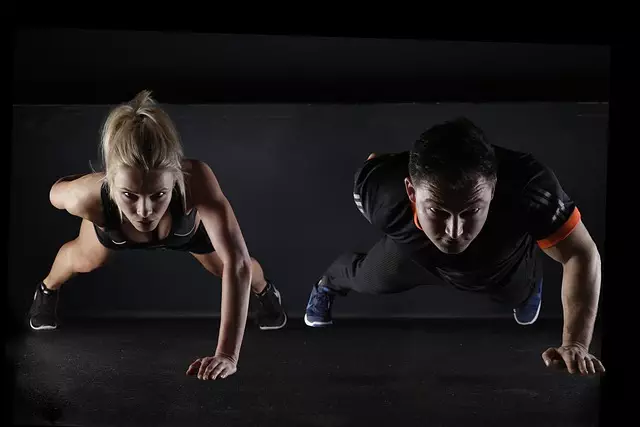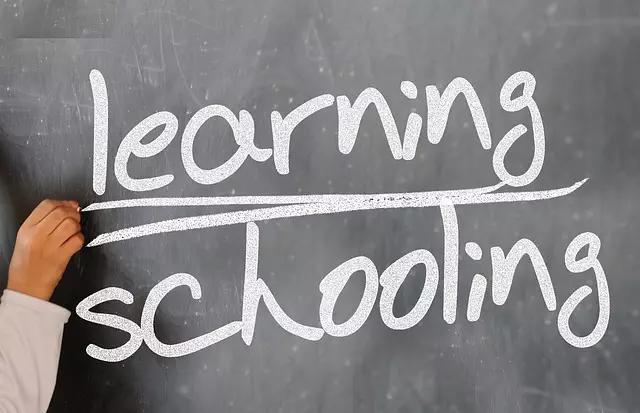On-Page SEO Training is vital for boosting online visibility and driving organic traffic by optimizing individual web pages to rank higher on search engines. This involves keyword research, quality content creation, meta tag optimization, and structural elements to engage users and search algorithms. Key components include intuitive navigation, visual elements, strategic keyword integration without stuffing, and regular content updates to maintain relevance. Effective title tags, header tags, and meta descriptions enhance user engagement and influence rankings. Balancing these elements creates high-quality, scannable content that fosters interaction, reduces bounce rates, and improves SEO rankings in today's digital landscape.
In today’s digital landscape, On-Page Optimization Training is paramount for enhancing online visibility. This comprehensive guide delves into crucial aspects of Content Layout for SEO, equipping folks with the knowledge to elevate their digital presence. From understanding the fundamentals of On-Page SEO to mastering title tags, optimizing headers, keyword integration, and image optimization—each section offers actionable insights for achieving top search engine rankings.
Understanding On-Page SEO: The Cornerstone of Digital Visibility

In the digital landscape, On-Page SEO stands as the cornerstone for enhancing online visibility and driving organic traffic to websites. It involves optimizing individual web pages to rank higher and earn more relevant traffic from search engines. This strategic process ensures that your content resonates with both users and search algorithms, fostering a harmonious relationship crucial for long-term success in the digital realm.
Effective On-Page SEO is an art and science, requiring a deep understanding of keywords, quality content creation, meta tag optimization, and structural elements. Through specialized On-Page Optimization Training, individuals can master these techniques, enabling them to craft content that not only captivates readers but also aligns with search engine best practices. By implementing these strategies, websites can establish themselves as authority figures within their niche, attracting a consistent stream of targeted visitors.
Key Components of Effective Content Layout for Optimal Search Engine Rankings

The key components of an effective content layout are fundamental to achieving optimal search engine rankings. Firstly, structured and intuitive navigation ensures users can easily explore your site, encouraging longer sessions and reducing bounce rates. This is achieved through clear headings, well-organized menus, and internal linking strategies that guide users to relevant content. Secondly, high-quality visuals, such as optimized images and infographics, enhance user experience and convey information more effectively. These elements should be optimized with descriptive file names, alt tags, and relevant captions to improve accessibility and search engine comprehension.
Additionally, seamless integration of target keywords throughout the layout is crucial. This includes strategic placement within headings (H1-H6), meta titles, descriptions, and content bodies. However, it’s essential to maintain a natural language flow and avoid keyword stuffing. On-Page Optimization Training can equip professionals with the skills to balance these elements, ensuring search engines comprehend the relevance of the content while providing users with a positive and engaging experience.
Mastering Title Tags and Meta Descriptions: Crafting Compelling Calls to Action

Mastering Title Tags and Meta Descriptions is a crucial aspect of on-page optimization training for any digital marketer. These elements are often overlooked, yet they significantly impact search engine rankings and user engagement. A well-crafted title tag and meta description not only entice users to click but also provide search engines with a clear understanding of your content’s relevance and quality.
When crafting these components, it’s essential to keep them concise, relevant, and compelling. Incorporate keywords naturally without overstuffing, ensuring they accurately represent the content while evoking a sense of curiosity or urgency. A successful title tag and meta description act as a powerful call to action on your webpage, guiding users and search algorithms alike to discover and engage with your content.
Optimizing Header Tags: Structuring Your Content for Readability and SEO

Optimizing Header Tags is a crucial part of on-page optimization training for SEO. By structuring your content with well-defined header tags (H1, H2, H3, etc.), you not only enhance readability but also provide valuable context to search engines. The H1 tag should represent the main topic or heading of your page, while subsequent headers (H2, H3) break down subtopics and key points. This hierarchical structure signals to both users and search algorithms that your content is well-organized and easy to navigate.
Effective use of header tags improves content discoverability, as it helps search engine crawlers quickly understand the main ideas within your article. Properly optimized headers can also lead to better click-through rates from search results, as users are more likely to engage with content that presents its information clearly and concisely. Remember, in addition to SEO benefits, well-structured headers make your content more accessible and user-friendly, ultimately enhancing the overall experience for your audience.
The Art of Keyword Integration: Natural Placement for Enhanced Relevance

In the realm of On-Page Optimization Training, the art of keyword integration is a delicate dance. It’s not about stuffing keywords haphazardly into content; rather, it’s about seamlessly weaving them into the fabric of your writing. Imagine crafting a captivating narrative where keywords flow naturally, much like a symphony where each note resonates in harmony with the next. This subtlety ensures that both search engines and readers perceive the content as valuable and relevant.
By understanding the context and intent behind each piece of content, you can position keywords strategically. For instance, using them in headings, subheadings, and the opening paragraphs can significantly enhance relevance. Remember, the goal is not just to include keywords but to create a compelling, informative piece that addresses user queries, thereby encouraging longer time spent on-page and lower bounce rates—all factors that signal to search engines the quality and relevance of your content.
Enhancing User Experience: Designing Scannable and Engaging Content

In today’s digital landscape, enhancing user experience is paramount for driving engagement and boosting search engine optimization (SEO). One effective strategy is to design content that is scannable and engaging. This involves structuring text with clear headings, subheadings, and bullet points to allow users to quickly grasp key information. Incorporating relevant images, infographics, or videos can further break up content, making it more digestible. On-Page Optimization Training emphasizes the importance of these visual elements in guiding users’ eyes across the page, reducing bounce rates, and increasing time spent on site—all factors that search engines consider when ranking websites.
Engaging content also encourages interaction through comments, shares, and likes, signaling to search algorithms that your site offers valuable, shareable information. To achieve this, writers should adopt a conversational tone, use active voice, and incorporate storytelling techniques where appropriate. By balancing informative with entertaining content, you can create a user experience that not only satisfies but captivates your audience, ultimately leading to better SEO rankings.
Image Optimization: Leveraging Visuals for Better Search Engine Understanding

In today’s visual-driven digital landscape, image optimization is a crucial aspect of on-page optimization training for SEO. When search engines crawl websites, they analyze every element, including images, to understand the content and context. By optimizing visuals, you provide search engines with valuable metadata, alternative text (alt tags), and descriptive file names that convey the image’s purpose and relevance. This enhances the search engine’s ability to index your content accurately, making it easier for potential users to discover your website through image searches.
Visuals can significantly impact user engagement and time spent on a page, which are factors considered in SEO rankings. Incorporating optimized images not only improves accessibility but also creates a more visually appealing and accessible user experience. Effective on-page optimization training should include strategies for compressing images without sacrificing quality to reduce load times, ensuring that each image tells a story that complements the surrounding content and boosts search engine comprehension.
Regularly Updating Content: Ensuring Freshness and Relevance for Long-Term SEO Success

Regular updates are vital for content to remain fresh and relevant, which is key to long-term SEO success. In today’s digital era, where information evolves rapidly, search engines favor websites that keep their content up-to-date. Regularly updating your content demonstrates to both users and search engine algorithms that your site is active and engaging, encouraging repeat visitors and boosting your search rankings.
On-Page Optimization Training can help you understand the importance of timely updates and implement strategies to ensure your content stays current. This involves setting a regular review schedule for existing content, identifying areas for improvement or expansion, and incorporating new keywords or trends seamlessly. By keeping your content fresh, you enhance user experience, increase engagement metrics, and solidify your site’s position as an authority in its niche.
